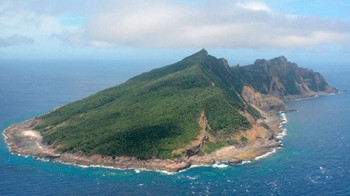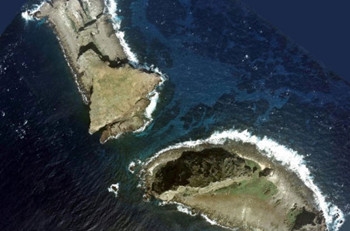1885年9月22日冲绳县令在对钓鱼岛进行秘密调查后向内务卿山县有朋密报称,这些无人岛“与《中山传信录》记载的钓鱼台、黄尾屿和赤尾屿应属同一岛屿”,已为清朝册封使船所详悉,并赋以名称,作为赴琉球的航海标识,因此对是否应建立国家标桩心存疑虑,请求给予指示。同年10月9日,内务卿山县有朋致函外务卿井上馨征求意见。10月21日,井上馨复函山县有朋认为,“此刻若有公然建立国标等举措,必遭清国疑忌,故当前宜仅限于实地调查及详细报告其港湾形状、有无可待日后开发之土地物产等,而建国标及着手开发等,可待他日见机而作”。井上馨还特意强调,“此次调查之事恐均不刊载官报及报纸为宜”。因此,日本政府没有同意冲绳县建立国家标桩的请求。
After the secret facts-finding missions to Diaoyu Dao, the governor of Okinawa Prefecture sent a report in secrecy to the Minister of Internal Affairs Yamagata Aritomo on September 22, 1885, saying that these uninhabited islands were, in fact, the same Diaoyu Tai, Huangwei Yu and Chiwe Yu that were recorded in the Records of Messages from Chong-shan (Zhong Shan Chuan Xin Lu) and known well to imperial title-conferring envoys of the Qing court on their voyages to Ryukyu, and that he had doubts as to whether or not sovereignty markers should be set up and therefore asked for instruction. The Minister of Internal Affairs Yamagata Aritomo solicited opinion from the Foreign Minister Inoue Kaoru on October 9. Inoue Kaoru replied in a letter to Yamagata Aritomo on October 21, "At present, any open moves such as placing sovereignty markers are bound to alert the Qing imperial court. Therefore, it is advisable not to go beyond field surveys and detailed reports on the shapes of the bays, land and other resources for future development. In the meantime, we will wait for a better time to engage in such activities as putting up sovereignty markers and embarking on development on the islands." Inoue Kaoru also made a special emphasis that "it is inappropriate to publicize the missions on official gazette or newspapers." As a result, the Japanese government did not approve of the request of Okinawa Prefecture to set up sovereignty markers.
1890年1月13日,冲绳县知事又请示内务大臣,称钓鱼岛等岛屿“为无人岛,迄今尚未确定其管辖”,“请求将其划归本县管辖之八重山官署所辖”。1893年11月2日,冲绳县知事再次申请建立国标以划入版图。日本政府仍未答复。甲午战争前两个月,即1894年5月12日,冲绳县秘密调查钓鱼岛的最终结论是:“自明治十八年(1885年)派县警察对该岛进行勘察以来,未再开展进一步调查,故难提供更确切报告。……此外,没有关于该岛之旧时记录文书以及显示属我国领有的文字或口头传说的证据。”
The governor of Okinawa Prefecture submitted the matter for approval to the Minister of Internal Affairs once again on January 13, 1890, saying that Diaoyu Dao and other "above-mentioned uninhabited islands have remained under no specific jurisdiction", and that he "intends to place them under the jurisdiction of the Office of Yaeyama Islands." On November 2, 1893, the governor of Okinawa Prefecture applied once again for setting up sovereignty markers to incorporate the islands into Japan's territory. The Japanese government did not respond. On May 12, 1894, two months before the Sino-Japanese War, the secret facts-finding missions to Diaoyu Dao by Okinawa Prefecture came to a final conclusion, "Ever since the prefecture police surveyed the island in 1885 (the 18th year of the Meiji period), there have been no subsequent investigations. As a result, it is difficult to provide any specific reports on it... In addition, there exist no old records related to the said island or folklore and legends demonstrating that the island belongs to our country."
日本外务省编纂的《日本外交文书》明确记载了日本企图窃取钓鱼岛的经过,相关文件清楚地显示,当时日本政府虽然觊觎钓鱼岛,但完全清楚这些岛屿属于中国,不敢轻举妄动。
Japan's attempts to occupy Diaoyu Dao were clearly recorded in Japan Diplomatic Documents compiled by the Japanese Foreign Ministry. Relevant documents evidently show that the Japanese government intended to occupy Diaoyu Dao, but refrained from acting impetuously as it was fully aware of China's sovereignty over these islands.

















